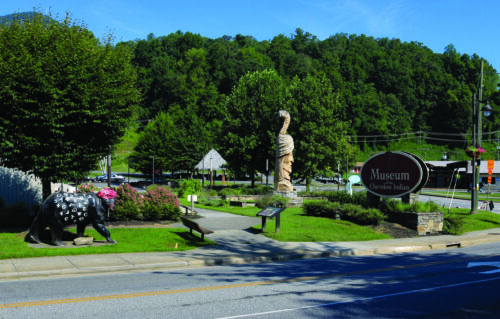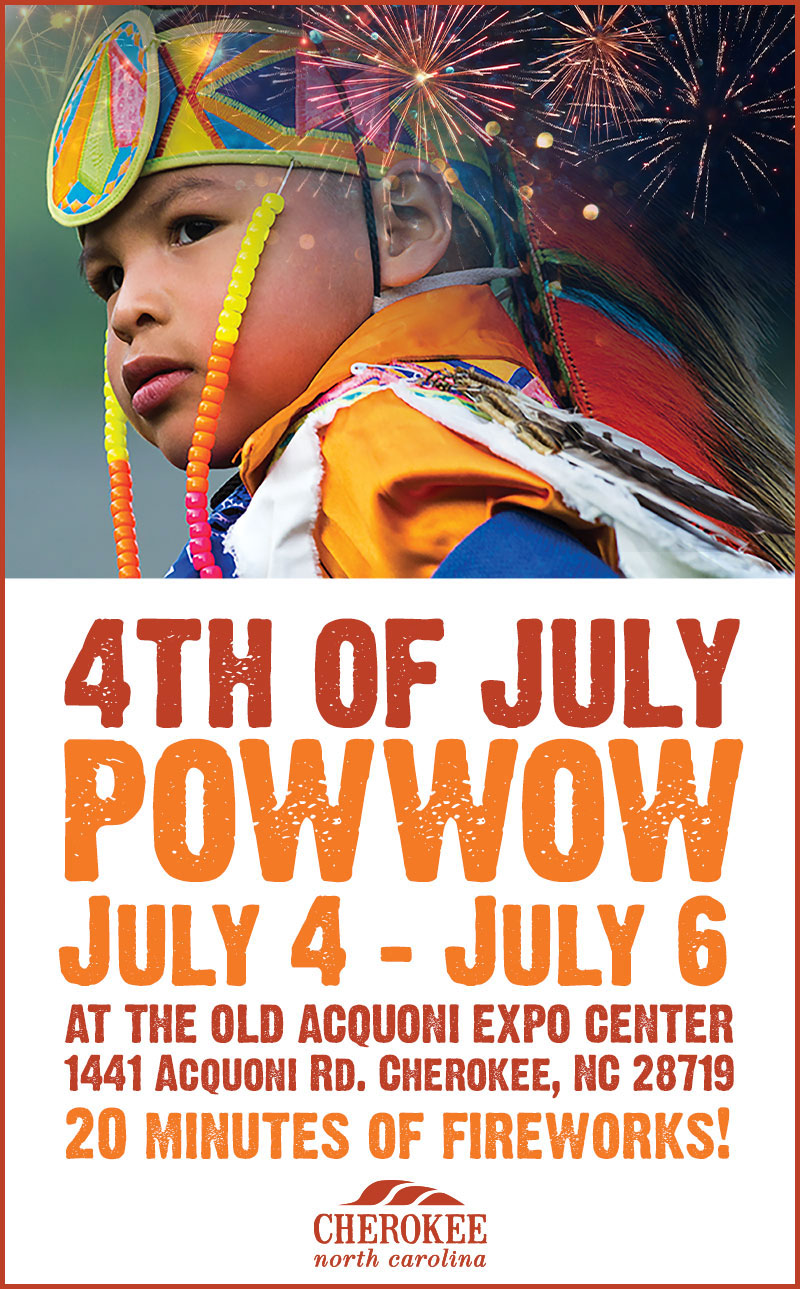By SCOTT MCKIE B.P.
One Feather Asst. Editor
CHEROKEE, N.C. – A grant from the Z. Smith Reynolds Foundation will provide for two artistic welcome signs to be installed designating the Cherokee Cultural District on the Qualla Boundary (Cherokee, N.C.). The Cultural District includes the Museum of the Cherokee Indian; Qualla Arts and Crafts Mutual, Inc.; Cherokee Historical Association; and Fire Mountain Trails.
The Museum of the Cherokee Indian, along with partners the Cherokee Historical Association and Qualla Arts and Crafts Mutual, Inc., received a grant for $75,900 from the Z. Smith Reynolds (ZSR) Foundation to start The Cherokee Cultural District Project. The funding is part of ZSR’s second cohort of the Inclusive Public Art Initiative which saw nine grants given totaling $1.6 million.

A grant from the Z. Smith Reynolds Foundation will provide for two artistic welcome signs to be installed designating the Cherokee Cultural District on the Qualla Boundary (Cherokee, N.C.). The Cultural District includes the Museum of the Cherokee Indian; Qualla Arts and Crafts Mutual, Inc.; Cherokee Historical Association; and Fire Mountain Trails. (SCOTT MCKIE B.P./One Feather photo)
“There’s nothing that visually defines the district for visitors or even for younger community members that are just kind of riding through here and may not know that this is a cultural district,” said Dakota Brown, Museum of the Cherokee Indian director of education. “So, we wanted to do some things to more clearly define the District. This grant is for us to be able to clearly define the Cherokee Cultural District through public art. So, what’s been approved in the grant is, basically, some entrance signs. However, we didn’t want them to just be normal signs that you see. We want it to be EBCI (Eastern Band of Cherokee Indians) artist-developed and artist-led.”
She added, “We don’t really want to put any parameters on what the possibilities are, at this point. We really want the artists that are chosen to really kind of come up with something. They’re going to be working with an engineer and fabricator for the designs to see what’s possible with a sign. But, we want it to be a really artist-led thing. We want the actual entrance signs to be pieces of art themselves.”
Atsei Cooper, Museum of the Cherokee Indian registrar, is the lead artist on the project. “It just is another way to really show that this is a cultural district, that this will be a different space, and this will be a space that will allow people to really come and learn and to actually see genuine Cherokee art in contrast to some of the things you may see in the gift shops around here…it’s a really good place for us to start, I think.”
In all, six to seven artists from the EBCI will be selected to work on the project which will include some roadway art as well.
Cooper noted, “We don’t have any of the artists selected yet. I’ll be working with Dakota to select those artists. I’m really excited. We have so many gifted artists in our community, and I’m really excited to work with everyone…I’m really excited to see what we can come up with together.”
“When we consider gadugi, like community coming together, I really like the idea of community artists coming together to create something together to showcase not just for people coming into our area or just passing through, but also for the community members here. I really like the idea of being able to help facilitate a community arts project that can leave a sense of pride within our community. That will last longer, probably, than our lives. Later on, someone might be like, ‘Oh my gosh, my grandma participated in this project’.”
Brown said they’ll launch a public call for artists in the near future. “The Museum has a ton of artists that we work with all the time. But, we realized that there are so many people in our community that don’t call themselves artists, but are just doing amazing things in their free time. So, we want to make sure that this opportunity is available to anybody that would like to take advantage of it or be a part of it. We don’t want to limit it to the artists that we know and work with all the time. We want to make sure that we’re reaching out to artists that we may not know about.”
She continued, “I think we tend to be very visitor-focused here, but uplifting artists in our community is one of the most important parts of this grant. Making sure that it’s collaborative with artists in our community is incredibly important. Also, being collaborative with our cultural partners. What places like this do for communities, when they’re done right…they can really create a sense of pride in your community when you’re driving through those areas. So, I do hope that in five years we can look at this area and there’s art everywhere made by our EBCI artists and that it creates a sense of pride for our community members, too, not just our visitors.”
Brown is hoping this project will be a springboard for more art on the Qualla Boundary. “I think the signs are important because they allow us to define the space. By doing that we can maybe do some changes in the future to that space and create a more cohesive look…being able to focus in on the Cultural District really allows us to hopefully do it right…we’re really excited to see where it could go.”
In addition to the funding going to the Museum of the Cherokee Indian, the following organizations in North Carolina received funding: Arise Collective, City of Washington, Coharie Intra-Tribal Council, Highland Neighborhood Association, Hola Carolina, Hope Center of Hendersonville, North Carolina African American Heritage Commission, and the Tryon Palace Foundation.
“All of these organizations are committed to telling their communities’ narrative authentically, and we are thrilled to partner with them in their work,” Tiki Windley, ZSR program officer, said in a statement. “We also know that these projects are not just about the art, and we look forward to seeing communities come together, engage diverse voices, and build new connections through the process.”






